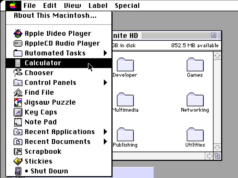
TikTok loves a pithy rule for weight loss, and the latest to make the rounds is a 30-30-30 morning routine (no relation to the 12-3-30 treadmill workout). And as a routine, it’s not bad, actually—but as a weight loss hack, it makes bigger promises than it can deliver on.
What is the 30-30-30 rule?
Even though people call it a “rule,” 30-30-30 is just a routine that includes breakfast and a short workout. The idea of 30-30-30 goes like this:
Within 30 minutes of waking up,
You eat 30 grams of protein,
And then do 30 minutes of low intensity cardio.
The current trend may have gotten its biggest boost from a Gary Brecka video—the guy all over TikTok with TED Talk-style lecture clips who we last saw trying to convince us that vegetables are poison. He says that he got the idea from The Four Hour Body by Tim Ferriss. It’s been a while since I’ve read that book, but a handout on Ferriss’s “slow carb diet” only mentions the first two bullet points, and he calls it the “30 in 30” rule. (To be clear, neither Ferriss nor Brecka are great sources of dietary or fitness advice. They both excitedly promote questionable weight-loss schemes—Ferriss’s diet cuts out bread, rice, potatoes, and all fruit—with only anecdotes to back up the claims that they work.)
Brecka says he’s “never seen anything in my life strip fat off of a human being faster than” 30-30-30, and while I can’t comment on what Brecka has seen in his life, there is nothing special about 30-30-30.
Why eat 30 grams of protein?
I do like the advice to eat 30 grams of protein. Many people, when losing weight, focus on calories and forget about protein, which is important for maintaining muscle if you’re losing fat, and it’s important for keeping your body healthy in general.
Protein alone doesn’t maintain muscle, though. To maximize those benefits, you need to do some kind of strength training as well. That could mean working out with weights a few times a week or doing bodyweight exercises at home–so long as you choose exercises that are actually challenging enough to build muscle.
The amount of protein recommended here is good: 30 grams is roughly a third of what you’re going for if you want to get about 100 grams total over the course of the day. As I’ve explained before, 100 is a good number for most people to shoot for as a minimum when trying to build or maintain muscle. (Here is a more detailed guide, if you’d like more specific numbers based on your goals and body size.)
Why eat protein in the morning?
Do you need to eat your first 30 grams of protein first thing in the morning? No, you can get your protein at any time of the day. But there are some advantages to the schedule.
The most important thing, if you aren’t used to eating a lot of protein, is to just actually start doing it. If you have a breakfast with basically no protein and only about 15 grams at lunchtime, then you’ll have to stuff a ton of protein into dinner–and at that point, maybe it’s been a long day and you’re like, forget it, I’ll do better tomorrow. But starting with 30 grams of protein in the morning means you’ve got a head start on the day’s intake. Many people also find protein to be more satiating than other foods, meaning that you’ll have an easier time sticking to your plan for a healthy lunch.
One more advantage, even for people who find it easy to get enough protein, is that it can be good to spread your protein throughout the day. In theory, each protein-rich meal gives your muscles a signal to build (or maintain) muscle tissue, so the more of those meals you get in a day, the better. In reality, it probably doesn’t matter much as long as you get enough protein in total, but starting out with a high-protein breakfast can help with the total amount, too.
What if I can’t easily eat within 30 minutes of waking up?
If you can’t easily eat within 30 minutes of waking up, then don’t. There is no magical protein-consumption window that kicks off when you wake up each morning. You can eat breakfast whenever you like. And if eating a protein-rich breakfast doesn’t work for your schedule or tastes, you’re not missing out on anything important.
How much is 30 grams of protein?
Here are a few examples of foods that contain 30 grams of protein:
Five eggs (scrambled, in an omelet, etc) or about a cup of liquid egg whites
A scoop of whey protein powder in a cup of skim milk
Half a chicken breast
About five ounces of turkey sausage
A five-ounce container of nonfat Greek yogurt with a half scoop of protein powder mixed in
You can mix and match, of course; an omelet with three eggs and a small handful of chopped chicken (plus some veggies) would fit the bill perfectly. And remember, there’s no law saying you have to eat “breakfast” foods at breakfast. If you have some leftover chili from last night, that’s a fine breakfast too.
Why 30 minutes of exercise in the morning?
As with the protein, there’s no special reason to exercise in the morning (and certainly not within some specific timeframe after waking up or after eating). But morning exercise works well for a lot of folks. Even I, a very-not-morning-person, get a definite mood and energy boost from a morning workout or a walk. And again, there’s that strategy of front loading the stuff you don’t want to slip off your to-do list. Get your exercise in first thing in the morning, and it’s already done.
The exercise in the 30-30-30 “rule” is usually understood to mean low intensity cardio, specifically. This is what’s called “zone 2” cardio, or what used to be called the “fat burning zone.” The advantages of keeping your cardio at a lower intensity include:
You’ll hate it less
It won’t make you as hungry as intense exercise
It won’t make you as tired as intense exercise
It’s best to do both easier and more intense exercise in general, but the lower-intensity stuff is great as a foundation, so if you can only do one or the other, start there. You’ll have an easier time building the habit, and you can sprinkle in the higher intensity stuff as an addition.
What are the downsides of 30-30-30?
I see two downsides to the 30-30-30 routine. One is obsessing over the specifics, since there’s absolutely no reason for any of the numbers to be exactly 30 or for the routine to be done in the exact way described. The other downside is the danger that you might believe the nonsense being used to justify it.
Let’s talk about the specificity first. I’ve seen people asking on Reddit what to do if they wake up at 4 a.m. but don’t actually get out of bed and begin their day until 6 a.m., or what they should eat because they can’t cook their usual breakfast within 30 minutes of waking up. The answer to all these questions is: it doesn’t matter. The 30 minute timeframe is made up to sound catchy. Nothing bad happens if you don’t make the deadline.
The same goes for the exact amount of protein. If you have 20 grams (just the yogurt, without the half-scoop of protein powder), are you ruining the weight loss magic? You’re not, because there is no weight loss magic. You can move the other 10 grams to lunch, if you think it will be easier to get in your day’s protein that way.
And that brings me to the claims about why 30-30-30 is a weight loss hack. (It is not a weight loss hack.) Brecka’s video about 30-30-30 contains a number of dubious assertions:
It claims that you burn through your muscle glycogen (stored carbs) in 20 minutes. This may be truth-adjacent if we’re talking about extremely high-intensity exercise, done fasted, but it’s not going to be relevant to weight loss in any meaningful way. If you’re an athlete who needs to do high-intensity exercise for more than 20 minutes, you’ll be paying attention to your fueling strategy anyway, most likely eating carbs before the workout to spare glycogen. The rest of us don’t need to worry about this.
It claims that it takes three minutes to “liquify” lean muscle. I cannot come up with a single way of reading this claim that corresponds to known facts about human biology.
It claims that it takes five hours to turn fat into energy. Well, we’re constantly turning fat into energy (it’s our main fuel source while we sleep and when we’re sitting or resting), so it doesn’t really matter how long it takes to start up the fat-burning machine; it’s always running.
These numbers are thrown out as an explanation for why fasted cardio is bad for weight loss, but they don’t add up; even if we were burning muscle by doing an OrangeTheory class first thing in the morning, that doesn’t mean we’re putting on weight or failing to lose weight. Our bodies use many fuels throughout the day, and weight changes result from the total energy balance we’ve created (burning more than we eat, or vice versa)—not from which fuel we’re using at which time.
If 30-30-30 works, it’s likely because it’s helping you form a more sustainable habit. Half an hour of low-intensity exercise is easy to stick to, as we saw with “cozy cardio,” and it meets the guidelines for cardiovascular health. Eating protein with breakfast helps you get started on your protein for the day, which is also good for health. So if 30-30-30 fits your personality and your schedule, it’s a fine way to build some healthy habits. Just don’t expect it to melt the pounds off. Weight changes come from adjusting how much you eat relative to the calories you burn. And there are plenty of ways to do it that don’t involve following a specific morning routine.








